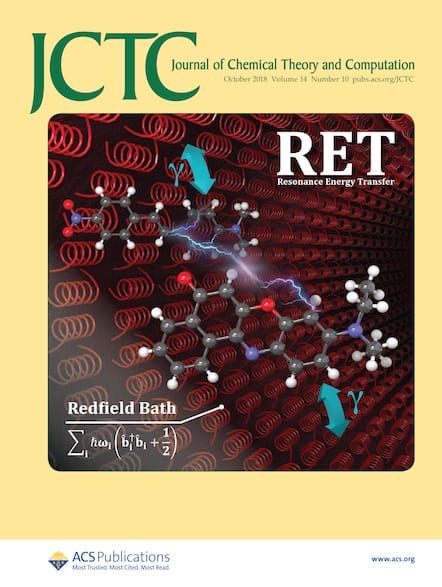Autopylot: Pragmatic Benchmarking of Excited-State Electronic Structure.
IF 5.7
1区 化学
Q2 CHEMISTRY, PHYSICAL
引用次数: 0
Abstract
Accurate excited-state modeling in photochemical studies hinges on the choice of the electronic structure method, which governs predicted pathways and mechanistic reliability. Yet this selection remains a major challenge, typically relying on chemical intuition and manual screening at a single geometry while overlooking broader regions of the potential energy surface. To overcome these limitations, we developed Autopylot, a Python package that automates excited-state benchmarking by comparing single-structure absorption spectra against a reference across multiple geometries, targeting accurate descriptions of both the Franck-Condon region and excited-state minima. Designed for flexibility, Autopylot supports the seamless addition of new geometry types and electronic structure methods. Reflecting a pragmatic philosophy, it incorporates computational time as a metric, guiding users toward optimal cost-accuracy trade-offs upon request. We benchmarked Autopylot on a set of 28 small organic molecules, where it consistently identified methods that closely reproduce the reference spectra within minutes. This performance marks a major step toward the high-throughput, automated selection of excited-state electronic structure methods.Autopylot:激发态电子结构的实用基准测试。
光化学研究中精确的激发态建模取决于电子结构方法的选择,这决定了预测途径和机制可靠性。然而,这种选择仍然是主要的挑战,通常依赖于化学直觉和单一几何形状的人工筛选,而忽略了更广泛的势能表面区域。为了克服这些限制,我们开发了Autopylot,这是一个Python包,通过将单一结构吸收光谱与多个几何形状的参考进行比较,自动进行激发态基准测试,目标是准确描述frank - condon区域和激发态最小值。专为灵活性,Autopylot支持无缝添加新的几何形状和电子结构方法。它反映了一种实用主义哲学,它将计算时间作为度量标准,指导用户根据要求进行最佳的成本-准确性权衡。我们在一组28个小有机分子上对Autopylot进行基准测试,在那里它一致地识别出在几分钟内紧密再现参考光谱的方法。这一性能标志着向高通量、自动化选择激发态电子结构方法迈出了重要的一步。
本文章由计算机程序翻译,如有差异,请以英文原文为准。
求助全文
约1分钟内获得全文
求助全文
来源期刊

Journal of Chemical Theory and Computation
化学-物理:原子、分子和化学物理
CiteScore
9.90
自引率
16.40%
发文量
568
审稿时长
1 months
期刊介绍:
The Journal of Chemical Theory and Computation invites new and original contributions with the understanding that, if accepted, they will not be published elsewhere. Papers reporting new theories, methodology, and/or important applications in quantum electronic structure, molecular dynamics, and statistical mechanics are appropriate for submission to this Journal. Specific topics include advances in or applications of ab initio quantum mechanics, density functional theory, design and properties of new materials, surface science, Monte Carlo simulations, solvation models, QM/MM calculations, biomolecular structure prediction, and molecular dynamics in the broadest sense including gas-phase dynamics, ab initio dynamics, biomolecular dynamics, and protein folding. The Journal does not consider papers that are straightforward applications of known methods including DFT and molecular dynamics. The Journal favors submissions that include advances in theory or methodology with applications to compelling problems.
 求助内容:
求助内容: 应助结果提醒方式:
应助结果提醒方式:


